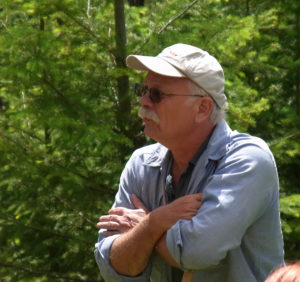Lost Lake: Inside the Gem
This presentation on February 5th, 2016, outlined how OHA is preserving the Lost Lake wetland, making the site available to researchers, and teaching youth about the value and function of wetlands, using Lost Lake as an example. Delve with us here into the depths of this gem, and take a look at the array of botanical wonders that thrive at the Preserve…
Panel of speakers:
- George Thornton
- Chloé Lahondère
- Clément Vinauger
- Lee Johnson
- Julie Vanderwal
“The wetlands within the Lost Lake Preserve are of high conservation value due to the rare plants and plant communities which occur there,” said Joe Rocchio, Vegetation Ecologist with the WA Natural Heritage Program. He added, “The site retains excellent ecological integrity despite numerous human stressors in the surrounding landscape. The Lost Lake Wetland Preserve harbors some significant pieces of Washington’s natural heritage. The long-term protection of this wetland complex contributes to the conservation of these biodiversity treasures within Washington state.”
The calcareous fen, “odd things in odd places,” and signature plant species
The Lost Lake wetland supports an astonishing degree of biodiversity, with several wetland types and a complex web of life. From aquatic insect-eating plants to Northern Harriers swooping through the air in search of prey, the wetland is a hub of activity. More loon chicks have been hatched at Lost Lake than at any other lake in WA State, using the wetland fringe for nesting. Throughout the site, various kinds of wetlands foster the growth of rare plants and rich wildlife, as the mix of land and water transitions from forested seepage wetland to calcareous fen to shrub swamp. One unique part of the Lost Lake wetland has plant associations that are typically found in rich to extremely rich fens, and is one of the rarest wetland types in the United States.
The Lost Lake wetland is being used as a research site to expand our understanding of the intricate relationships between organisms, land, and water. To this end, two post-doctoral researchers from the department of Biology at UW in Seattle, Chloé Lahondere and Clément Vinauger, have been studying the pollination of a rare orchid by mosquitoes, at the Lost Lake Preserve and in the surrounding area. Chloé and Clément shared about their work in analyzing the scent of the native orchids. By identifying the various chemicals emitted by the plants and measuring the response of the mosquitoes to the orchids’ odors, this research will help establish to which compounds mosquitoes are attracted. This is one component of the UW research into mosquitoes’ behavior, physiology and ecology, and just one example of unique research opportunities that may be possible the Lost Lake Preserve.

Habitat enhancement is another important component of the Preserve, and local community member Lee Johnson spoke about the nesting boxes and habitat piles that have been added to the site, along with some of the results. OHA recognizes the educational value of the Preserve, and Julie Vanderwal shared a few of the ways Lost Lake is being used to raise awareness about wetland and forest ecology.
George Thornton has nurtured a personal interest in native plants of Okanogan Highlands for many years, observing some of our most special wetlands over time. He has led two native plant hikes at Lost Lake as part of OHA’s outdoor Highland Wonders series, and has helped with countless other educational events.